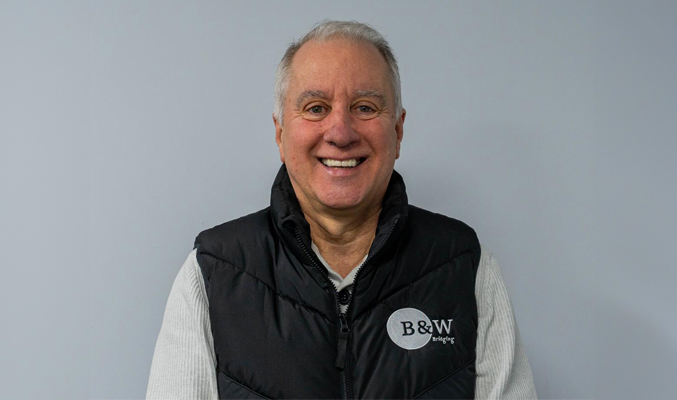Kick out greenwashing in 10 steps
By Hannah Duncan

Up to 40% of ESG, sustainable and ethical marketing is a load of old rubbish. That’s the latest finding – although phrased differently – from leading government watchdog, the Competition and Markets Authority (CMA).
While fast fashion came out on top as the most notorious offender, finance and even bridging finance is by no means innocent. 2021 findings by iResearch reveal that over half of financial services believe that their competitors are deliberately misleading customers about their environmental credentials. Ouch. Whether intentional or not, greenwashing in our industry is certainly rife.
So, how can you avoid greenwashing in your bridging firm? Together with Smithi Sharma, ESG & Assurance Manager for Atelier and Klaudia Bacinska, Director of Brand and Marketing for Impact Capital Group, we came up with a 10-point checklist for lenders.
1. Be transparent
One of the most straightforward ways to avoid greenwashing is to tell the truth without exaggerating. “Just be transparent and be honest”, says Sharma. “If you feel the need to overclaim then you’re already doing something wrong”.
2. Read the CMA’s Green Claims Code
A tangible action all marketing and leadership teams can take today to avoid greenwashing is read-up on the rules. “The CMA published a Green Claims Code to help businesses comply with the law”, says Bacinska.
The 27-page document covers all the essentials and explains why greenwashing is so dangerous for society and the environment. Consulting the guide before you make a claim is a simple check to help keep you on the straight and narrow.
3. Use the correct terms
Financial services described as ESG – which stands for Environmental Social Governance – are fast-developing a strict set of criteria. The terminology has even been enshrined in law the UK and EU Taxonomy Regulations. So, you don’t want to get them wrong!
Importantly, ESG and sustainability relates to the main business of your company and not side-projects. If you’re calling your CSR initiatives – like recycling paper or cleaning up a park – part of your “ESG” you’re probably greenwashing. It’s best to call things by their official names.
4. Follow the money carefully
When it comes to bridging lending, the devil is in the detail. If you’re claiming to be green, you need to know down to the brick what you’re funding. “You’ve got to look at the entire lifecycle of the [property]”, begins Bacinska. “The materials used in construction, the energy performance of the property, the design of the development … There are many different components”, she explains.
It’s not a quick job. “It gets complicated”, Bacinska elaborates, “because every development has a different nature”. A good way to genuinely green-up the process could be to ditch carbon-intensive traditional construction methods, and start underwriting modular technology. But you still need to carefully follow the money to make sure you’re not overstating your greenness.
5. Think of the end-user
Another way to avoid greenwashing is to think carefully of the person who will use the office or live in the property. There’s no point saying that the design promotes sustainable living if it’s miles away from public transport and everyone will need to drive a car. Or claiming that it’s social housing if universal credit renters will be turned away.
“Look at the people living in these buildings”, recommends Bacinska. “What is it they do? What are their habits? And how does that drive change?” When you have a real picture, you’re in a better situation to make real claims.
6. Check if the contractor has cut any sustainable corners
Between the architect and the builders is a contractor. And, more often than not, they’re out to make an extra profit by siphoning off bits here and there. Over the past years, we’ve witnessed some devastating implications of this. If you’re financing a building which has been designed in a green way, check that what’s being constructed matches up with the initial plan.
7. Don’t make claims on a whim
“Decisions need to be thoroughly researched and backed by facts”, reinforces Bacinska. “Focus a lot on research and capture that data. It’s so important”.
Sharma agrees that quick and sloppy decisions are making the problem worse. “We’re seeing a lot of lazy initiatives”, she adds. Take the time to thoroughly examine if your existing green claims stand up to scrutiny, and debate whether new ones are backed by facts.
8. Don’t “pay to pollute”
One example of these lazy initiatives is the rise off-setting, or in other words “paying to pollute”. This should be a very last resort. And – in isolation – it doesn’t qualify a lender as being “green”, “ESG” or “sustainable”. A sustainable business model is one which comes from the core of the company. It’s about ensuring every part of the business can meet the needs of the present without compromising the needs of the future.
“Damaging the planet as much as you want and then off-setting it?”, asks Sharma. “That’s just another sort of greenwash”
What’s more, many offsetting firms today – also referred to as carbon markets – are not that trustworthy. When it comes the murky world of unregulated carbon markets, bridging lenders should be extra cautious.
9. Use metrics and frameworks in your KPIs
Establishing key metrics and frameworks is important to avoid greenwashing, says Bacinska. And to be honest, it seems like it just seems like good business sense to attach some numbers and targets to your green strategy.
If we treat it the same way that we treat profits, we could make enormous progress. Key performance indicators are essential to make meaningful change.
10. Collaborate!
All too often in big firms departments pull in different directions and contradict each other. Working across the company and across all levels is an important way to make sure that everyone is focused on the same goal.
“Your leadership team needs to enforce this level of ESG”, stresses Sharma. This may involve a culture overhaul in some cases, but the business and environmental results are likely to be very worthwhile!
Not only should firms work together internally, but externally as well. Sharing successes and creating consistency across the industry is key. “We have a long way to go”, says Bacinska. “But I do think we can achieve it. But we can only reach a pure sustainable product if we do it collaboratively”.
Stamping out greenwashing is not something that can be done overnight. But with these 10 simple tips, bridging lenders can make a start on the process.
Bringing more transparency and genuinely greener products to the market can only be better for everyone. If you have more comments, ideas or would like to collaborate, please let us know!
Hungry for more? Discover our five expert ways to reduce carbon emissions

Hannah Duncan is a freelance writer with a passion for finance, sustainable investing and fintech. She loves writing engaging content for industry magazines and investment services, as well as keeping a personal blog at www.hdinvestmentcontent.com










You must be logged in to post a comment.